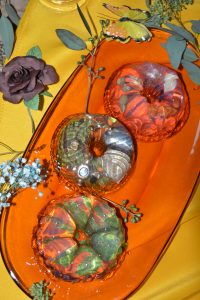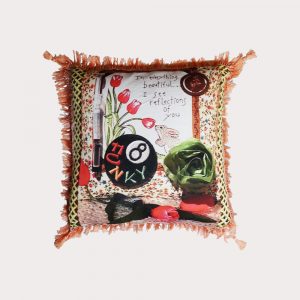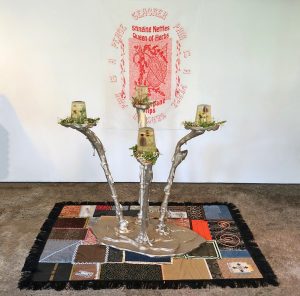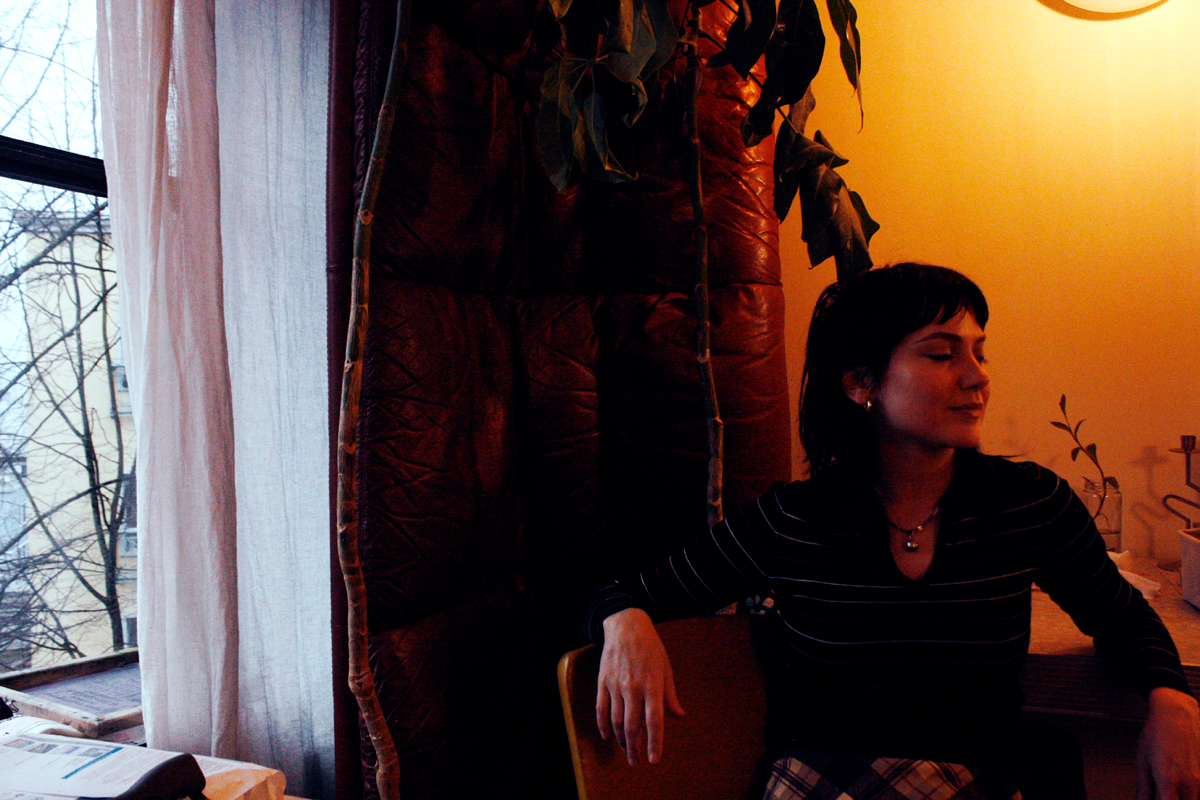Sharona Franklin is a disabled artist who recently attracted much mainstream attention after Gucci plagiarized her cake sculptures, with no compensation or credit given. She runs @paid.technologies, which houses her edible sculptures, @hot.crip, for charged memes touching on disability and chronic-illness, @disabled.personals, co-ran with Tash King as a  community-buildinginitiative for disabled individuals, and @star.seeded, where Sharona posts more personal work. This includes written work, digital art and textiles, along with insight into navigating life through her diagnoses andlived experience. On behalf of Discorder, I had the opportunity to talk to Sharona about the evolution of her practice and advocacy, erasure, and the impact social media has had on her work and community.
community-buildinginitiative for disabled individuals, and @star.seeded, where Sharona posts more personal work. This includes written work, digital art and textiles, along with insight into navigating life through her diagnoses andlived experience. On behalf of Discorder, I had the opportunity to talk to Sharona about the evolution of her practice and advocacy, erasure, and the impact social media has had on her work and community.
To start, I wanted to ask for an overview of what has lead to your current projects, since they expand over multiple accounts and mediums.
I’ve been making all sorts of work since I was a kid. In my early twenties, I was baking a lot but was also really interested in community organization and how spaces can be embodied and shared, so I was curating a lot. I started making more personal work when I was 27 but was never really public about anything related to my life or disability — I found that I preferred to focus on facilitating. I was in the hospital a lot and it just became more apparent the older I got that I couldn’t really live with this division and started making work trying to communicate about disability and invisibility. I started sharing work online and remember it being kind of confusing for people; I got a lot of weird feedback. When I started the
New Psychedelia project, it was really important to me to destigmatize these topics. There was this interesting thing where bakers — or this very specific type of person into craft and artisanal work — would start following me, and a separate group of people, who were more interested in advocacy and disability, would as well and they wouldn’t mesh. A lot ofthem didn’t want to engage with the other things I was engaging with, or weren’t interested in accepting the complexity of how I live and choose to communicate. In January, I was like: You know what? People are so specific in how they engage with me, and I’m so used to feeling erased on a day to day basis anyways, that I began to separate everything. When I was curating and doing graphic design, it was great in the sense that I never had to talk about myself or be vulnerable. After quite a few years of that, I realized there was a lot of division in how I was living. Me creating my own artwork and poetry, and starting to change my practice, was part of trying to give visibility to all of that.

That’s interesting because my next question was as to whether the separation happened to fill a gap or if it was more an attempt to divide things into more digestible chunks for people to engage with.
I think that there was a major intent in clarifying my own ideas as well, because @paid.technologies helps normalize and destigmatize my life in that I get to live and share my art like anybody else. There doesn’t necessarily need to be a constant political answer or a vulnerability in how I’m making things. A lot of my work can exist and be enjoyed on its own.A lot of the time, I don’t wanna talk about politics even though I think about it all the time. For me, too, it created a space where I can relax and not have to dig up trauma or be prone to hyperpersonal questions. I realized that in my advocacy and personal art, I’m creating a large place for those conversations to happen but it’s not healthy for them to always be happening.
The Q&As and surveys you hold on Instagram attempt to actively engage with the experiences of disabled individuals. It has the function of engagement but also education. How has social media allowed you to expand your practice and to cultivate a community?
I used to be very anti-technology. I think that drove me to put on community events, but then I got burnt out by these dominantly able-bodied events that seemed to keep happening. I couldn’t really leave home in my later twenties and thought I would try hashtagging some things, like a few of my medications and illnesses. I realized the way I had been approaching community was the way I was told was the right way, but when you’re at home or in doctor’s offices a lot, it’s hard to cultivate that. I also realized when I was engaging in person, I was most often the only disabled person. It made me feel like I kept hitting a wall — I could talk to my friends about it, and they would be kind and nice, but they couldn’t relate. I also couldn’t get tips on how to function or navigate the disability system. I felt like the only person dealing with these problems in my community. For a long time, I didn’t know a single person who was receiving disability, who had ever even heard of the medications I was taking, and I had gone my whole life like that. When I started  hashtagging I felt so much less alone — the irony of it was that I felt judged by my IRL community. I think a lot of abled people use social media as entertainment […] and for people with disabilities it’s often the only safe space. If we can find one person through a hashtag who takes this medication and can have an unjudged conversation, no able people involved, it’s so comforting. It started that way and I now have so many friends with all different disabilities, who can and can’t relate, but we can all empathize and try to understand.
hashtagging I felt so much less alone — the irony of it was that I felt judged by my IRL community. I think a lot of abled people use social media as entertainment […] and for people with disabilities it’s often the only safe space. If we can find one person through a hashtag who takes this medication and can have an unjudged conversation, no able people involved, it’s so comforting. It started that way and I now have so many friends with all different disabilities, who can and can’t relate, but we can all empathize and try to understand.
Even in art, a lot of my disabled friends use computer programs like I do and there’s a lot of elitism in construction and a studio practice that uses your hands. I remember when I first started using my computer, people were like “Oh, that’s just digital art.” I know that I can make things with my hands, but it doesn’t mean that I always should be because that can be really damaging to me. Within the disability community, a lot of friends are talking about access to resources — finding ways to have lightweight or affordable materials that can be easily manipulated with little physical exertion. When I was younger, I put so much pressure on myself to make things by hand and then I inherently wouldn’t be able to do things or wouldn’t finish things. When I took that pressure off of myself, it was such a steady flow of creativity because I wasn’t as inhibited by my body. In a creative respect it’s helped me a lot too.
It seems in listening to the changes in your physical health you often accommodate for that in your practice, as well.
I have probably ten different people that help me, and three people that specifically help me in the kitchen; lifting and carrying ingredients. I have friends who help me document and transport work. It depends on my ability levels. It’s funny because when I make cakes, often I can lift one ingredient at a time but once I’ve made [the whole sculpture], I can’t lift it. When I make papier-mâché, the cool thing about it — similar to the jelly sculptures — is that you use little bits at a time. Then, in the end you have this giant structure, which I couldn’t physically create at once. It’s interesting because a lot of able-bodied people hire assistants and they don’t get judged for it. As soon as you’re a disabled person, people say “Could you do it without help?” I can do everything without help but it’s very damaging to me. Why should disabled people have to put their body into worse and worse pain just for the satisfaction of an able-bodied viewer?



